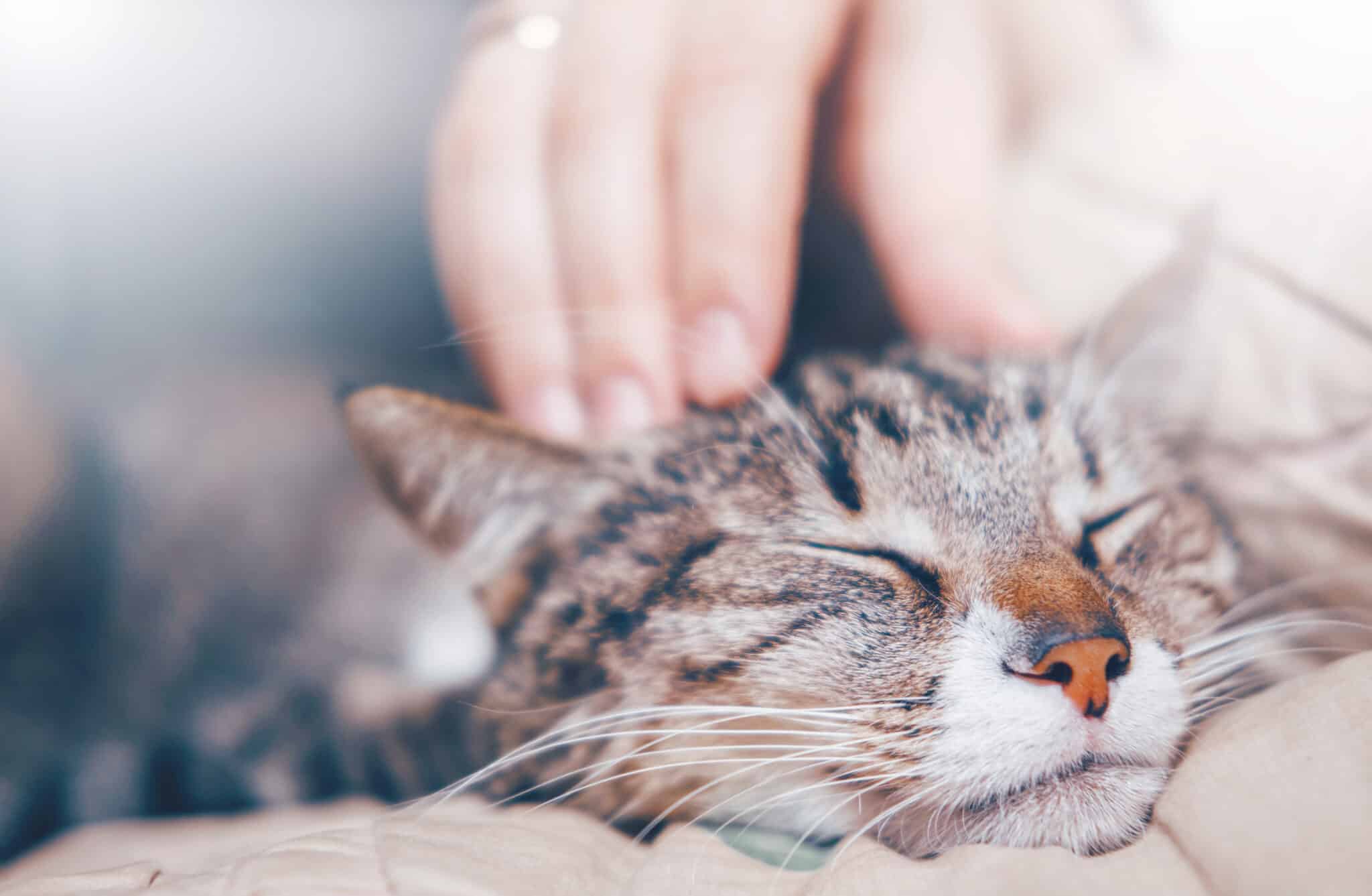What Is Pet Insurance?
Pet insurance is a policy you can take out to cover your pet’s health-related expenses. Although it may seem similar to human health insurance, the claims filing process differs—you pay for veterinary bills upfront and receive a reimbursement later. While you can purchase pet insurance for any dog or cat, some providers enforce age limits that may restrict enrollment.
Standard pet insurance plans cover diagnostics and treatments for pet accidents and illnesses, but you can also purchase cheaper accident-only plans to cover emergencies and injuries. Standard plans will not cover routine care costs, such as annual visits and vaccines, but you can purchase additional wellness coverage from many providers.
How Does Pet Insurance Work?
Pet insurance differs from human health insurance in that most plans operate on a reimbursement model — you pay your vet directly at the time of service and submit the bill to your insurance provider via an online portal, mobile app, email or regular mail for reimbursement afterward. Once the claim is processed, you’re reimbursed for a portion of the bill. How much you’re reimbursed depends on your specific plan details, which you can choose during enrollment. Most plans pay 70% to 90% of the total bill minus any deductible or ineligible expenses, leaving you responsible for the remainder. Generally, your insurance provider will reimburse you up to your plan’s annual or per-incident coverage limits.
Here is a step-by-step guide for a typical pet insurance claim:
- Visit your veterinarian and pay for the rendered services at checkout.
- If your provider has a mobile app, upload a copy or photo of your invoice. You can also email it to the company.
- If it’s your first claim, upload copies of your pet’s medical records from the past 12 months to speed up processing. If it’s not your first claim, upload relevant notes or ask your vet to send this information on your behalf.
- Once your claim is approved, your provider will calculate a reimbursement based on your plan specifics. In most cases, this means first subtracting your deductible and then applying your reimbursement rate to eligible expenses.
- You will receive your check in the mail or direct deposit into your bank account.
In addition to the traditional reimbursement model, some companies offer vet direct pay, where you pay your portion of the bill upfront, specifically a copay or coinsurance, and the insurance company pays the remainder to the vet at the time of service. Although this option is more convenient, policies may cost more than other options and limit you to using veterinarians who partner with insurance providers that accept direct payment.
Deductibles, Reimbursement Rates and Annual Limits
A deductible is the amount you must pay for your pet’s care out of pocket before receiving reimbursement from your insurance provider. Some companies offer a per-incident deductible, which means you’ll need to meet that amount for every incident. Other companies offer an annual deductible, so you’ll only need to meet the deductible once per year. Deductibles can range from $0 to $1,000 per incident or year.
When you enroll in a pet insurance policy, you can also select a reimbursement rate. This is the percentage of covered costs that your provider will reimburse you for after you meet your deductible. You’ll pay a lower monthly premium if you choose a lower reimbursement rate, but you’ll owe a greater portion of the bill. If you choose a high reimbursement rate, you’ll also pay a higher monthly premium, but you’ll get more money back on approved claims.
Most insurance companies offer multiple reimbursement options, such as 70%, 80% or 90% of the cost of care.
An annual limit is the maximum amount a pet insurance policy will pay in reimbursements each year. Most companies allow pet owners to choose an annual limit from multiple options, ranging from $2,500 to unlimited. The lower your annual limit, the less your plan will cost you in monthly premiums and vice versa. Additionally, some policies may impose per-incident maximums, which limit how much the company spends on individual services or conditions, such as trauma or cancer.
Do I Need Pet Insurance?
Pet insurance ensures that your pet will be taken care of and your finances won’t be in turmoil if an unforeseen emergency or illness occurs.
You should also consider the potential out-of-pocket vet expenses you’ll incur without pet insurance. According to data from Healthy Paws, veterinary care for the most common pet conditions is significantly more expensive than the average annual pet insurance policy.
Urinary tract infections, which can lead to kidney problems, can cost up to $9,115 to treat a dog or $12,587 for a cat. By contrast, the average annual cost for pet insurance runs between $360 and $600 for dogs and $180 to $360 for cats.
What Does Pet Insurance Cover?
Companies can offer a variety of pet insurance policies, each with different coverage. Common pet insurance plan types and coverages include:
An accident and illness pet insurance plan is a type of insurance that covers veterinary costs for a pet in the event of accidents, injuries, or illnesses. These plans help pet owners pay for unexpected and potentially expensive veterinary bills by reimbursing a portion of the costs associated with diagnosing and treating health issues in pets.
An accident-only pet insurance plan covers veterinary costs solely for injuries or issues caused by accidents, reimbursing the pet owner for a portion of expenses related to diagnosing and treating any injuries or trauma the pet sustains. Unlike an accident and illness plan, an accident-only plan does not provide coverage for treating illnesses that a pet develops.
A wellness or routine care pet insurance plan covers the costs of regular veterinary services like vaccinations, checkups, teeth cleanings, and flea/tick prevention, reimbursing the pet owner for many of the expenses related to these preventative care services. Unlike accident and illness plans, wellness plans only cover the routine, predictable costs of caring for a pet.
While exact coverage will vary by provider, commonly covered diagnostic tests include blood tests, X-rays, ultrasounds, CT scans and MRIs. Covered treatments also vary and may include prescription drugs, surgery, physical therapy or alternative and complementary care.
What Doesn’t Pet Insurance Cover?
Pre-existing conditions, or conditions your pet is diagnosed with or showed signs of before policy enrollment, are a primary exclusion across all pet insurance plans. However, each provider handles “curable” pre-existing conditions differently. Some companies offer coverage if a pet remains symptom-free after six to 12 months, while others may exclude coverage if symptoms recur.
Many plans also exclude or place restrictions on the following conditions:
- Pregnancy and whelping
- Cosmetic procedures
- Supplements
- Prescription foods
- Experimental treatments
Generally, pet insurance also does not cover non-medical expenses, such as grooming, boarding, toys or treats. Researching providers and reading through sample policies can help you understand each plan’s limits and exclusions before signing up.
How Much Does Pet Insurance Cost?
The average cost of a pet insurance plan is $64 per month for adult dogs and $27 for adult cats, according to our extensive sample quote analysis. Our process includes gathering quotes for four sample pet types across 11 providers in each state.
The amount you pay each month toward your pet’s insurance plan is called a premium. Insurance underwriters determine premiums by analyzing financial risks, so your plan cost will vary based on where you live, your pet’s health, and historical or breed-related data that can indicate future risks.
As the policyholder, you can lower your monthly premiums by choosing higher deductibles, lower annual limits or lower reimbursement rates. However, doing so may offset the total value of your plan if you need to file a claim.
The following are additional factors that influence plan pricing:
- Age: Your pet’s risk of illness or injury increases with age, as do the costs to cover these issues.
- Breed: Your pet’s breed can affect your monthly premium if your dog or cat is predisposed to specific conditions as a result, such as hip dysplasia or eye diseases.
- Discounts: Many pet insurance providers offer discounts of 5% to 10% for active-duty or veteran military personnel, multiple-pet households, corporate benefit programs, owning a shelter pet, and more.
- Location: You may pay increased insurance premiums in areas where the general cost of living and veterinary services are higher.
- Species: Veterinary care for dogs is typically more expensive than for cats.
How Soon After Getting Pet Insurance Can You Use It?
When you purchase a pet insurance policy, you cannot use your plan until a set amount of time has passed. This is called the waiting period, which insurance companies implement to prevent fraudulent claims relating to pre-existing conditions. Most plans limit accident and illness waiting periods to two weeks or less.
However, orthopedic waiting periods can extend between six and 12 months. Depending on your provider, you can waive waiting periods by having a veterinarian examine your pet and verify its joints are healthy shortly after purchasing your plan.
Pros and Cons of Pet Insurance
Pet insurance is a financial tool that can help you manage your pet’s health risks. However, as with any insurance product, first consider the pros and cons of purchasing a policy.

When Is the Best Time to Buy Pet Insurance?
Our pet experts say the best time to purchase a pet insurance policy is as soon as possible — even before you bring your new pet home. “If an owner waits until after the first puppy or kitten checkup, the vet may detect a medical condition that would never be covered by the insurer as it would be classified as ‘preexisting,’” says Dr. Linda Simon, a veterinary surgeon and consultant for FiveBarks. This is especially true for pet breeds that are susceptible to genetic diseases.
“When any of my clients contact me about a new pet coming into the family, the first thing I tell them to do is to get pet insurance,” veterinarian Dr. Shannon Barrett adds. “It is the most important investment an owner can make.”
Pet insurance policies tend to be cheaper when pets are younger, so prices will likely increase with age. However, Trupanion guarantees its customers that it will not raise rates as their pet ages.
Key Takeaways
- Pet insurance can offer peace of mind by providing reimbursements for large unexpected veterinary bills or ongoing pet care expenses.
- According to the 2024 highlights of the recent State of the Industry Report, there at 6.25 million pets insured, which is a 10% increase from the end of 2023.
- Although veterinary care costs are rising, according to the same report, pet insurance premiums have decreased for cats and increased by less than 6% for dogs. There is no better time to get pet insurance than now.
Frequently Asked Questions
Pet insurance waiting periods depend on the plan and where you live. Most plans offer waiting periods from one to 15 days for accidents and illnesses, although some require six to 12-month waiting periods for orthopedic injuries and diseases. Some states limit pet insurance waiting periods to 30 days.Pet insurance waiting periods depend on the plan and where you live. Most plans offer waiting periods from one to 15 days for accidents and illnesses, although some require six to 12-month waiting periods for orthopedic injuries and diseases. Some states limit pet insurance waiting periods to 30 days.
When your pet experiences an accident, you can seek emergency or urgent care at a veterinarian’s office of your choice. Afterward, you’ll file a claim with your insurance provider, submit necessary documents, and receive reimbursement according to your plan’s deductible and reimbursement rates.
A veterinary office visit fee costs at least $50, but this does not include diagnostic tests or treatments for accidents or illnesses. Emergency and surgical visits can cost considerably more.
If you have questions about this page, please reach out to our editors at editors@marketwatchguides.com.


















